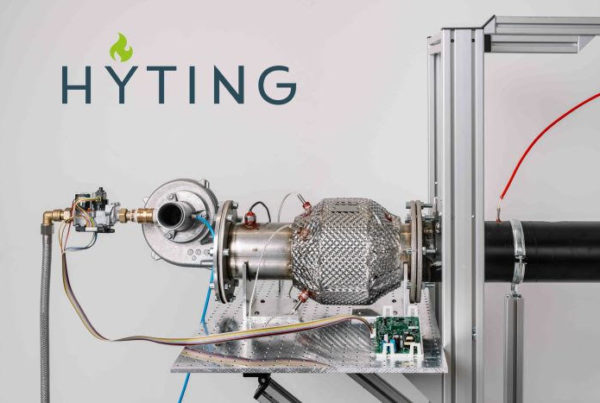
People are becoming more interested in hydrogen fuel cells as an alternative power source. They realize it’s time to make more sustainable choices and believe hydrogen could help point the way forward. However, fire safety is a topic that frequently comes up in discussions. Here are some things people must consider as they explore the safe usage of hydrogen fuel cells.
Various Drivers Exist for Hydrogen-Related Parking Garage Fires
Dutch researchers conducted an extensive study and reviewed existing research to determine which aspects of hydrogen fuel cells raise the risk of parking garage fires. More importantly, they examined how engineers of these power sources could mitigate the threats.
One finding was that reducing the diameter of the thermally activated pressure relief device (TPRD) in the fuel cell nearly eliminated the risk of a jet flame. Relatedly, smaller jet flames would likely make the associated damaging effects less severe.
The researchers acknowledged the lack of sufficient evidence indicating how likely it would be for a fire in a hydrogen-fueled car to spread to adjacent vehicles. However, they said whether the parking structure has a closed or open-top design would likely make a difference in the outcomes.
The researchers also said the car’s size and weight matter because a larger vehicle would generate more heat. Relatedly, plastic is a material often used to reduce a vehicle’s weight. However, the amount of that material in a hydrogen-powered car would impact outcomes. More specifically, increased plastic content raises the heat released during a fire. Plus, it makes cars ignite faster and burn more quickly.
Another conclusion was that conventional fuels are more likely to leak in parking garages than hydrogen. However, when hydrogen accidents do happen, the ignition probability may be higher. The researchers hesitated to make definitive conclusions, though, due to literature discrepancies. In any case, takeaways like these will help people design hydrogen cars with lower fire risks.
Hydrogen Fires Require Specific Fighting Techniques
Hydrogen is extremely flammable. Moreover, it only needs a small amount of energy to ignite. The professionals responding to hydrogen fuel cell fires must proceed with the utmost caution in situations where the fail-safe shutdown mechanism fails to activate.
In such cases, the release of hydrogen is a likely occurrence. Thus, the probability of ignition exists. The consensus is that hydrogen-powered vehicles do not pose increased dangers versus conventional ones. However, they introduce a different set of risks.
A best practice associated with house fires is that the affected parties should not try to handle the cleanup efforts themselves. Professionals must use special cleaning techniques to remove all the smoke and soot. Similarly, firefighters need to complete dedicated training modules to prepare to handle hydrogen-based blazes.
As hydrogen fuel cells become more widely used, fire departments’ educational coordinators will likely need to set aside more time for their workforce to participate. For now, they can get prepared by learning more about what training materials exist and which outlets offer them.
Risk Mitigation Planning Could Increase Adoption
Hydrogen fuel cells provide an efficient and low-emission option. They’re still not widely used, however. That’s partially because of some prevailing misconceptions. Additionally, many people become wary of things perceived as new.
However, some experts believe hydrogen fuel cells could power vertical-take-off-and-landing (VTOL) aircraft. Advocates say switching batteries out in favor of hydrogen could overcome current limitations and increase the possibilities. However, they recognize that hydrogen emergencies bring new threats.
Aviation infrastructure designs currently mitigate the fires and spills of non-hydrogen fuel sources. Thus, the responsible parties must make dedicated efforts to learn about reducing hydrogen-related risks and acting accordingly.
Understanding and preventing issues is vital for making emergencies less likely. That’s true for hydrogen fuel cells and virtually all other products people use to meet various needs.
Reduction, Not Elimination
Practicing effective fire safety is all about minimizing any identified risks. It’s impossible to eliminate threats, so people must do their best to lower danger levels with the knowledge they have.
These realities persist within and beyond hydrogen fuel cell usage. People who work with hydrogen fuel cells now, or will soon, must understand that their associated risks are not necessarily greater than that of other power sources. However, they’re unique and require specialized handling to maintain safety.
Fire safety improvements beyond those discussed here will also occur as people learn more about real-world, widespread uses of hydrogen fuel cells. Applying that new knowledge to safety features or changes can lower the risk of accidents for everyone involved.


Jane Marsh, Contributor
The views and opinions expressed herein are those of the authors and do not necessarily reflect the official policy or position of Fuel Cells Works, its directors, partners, staff, contributors, or suppliers. Any content provided by our contributors or authors are of their own opinion and are not intended to malign any religion, ethnic group, club, organization, company, individual or anyone or anything.
Read the most up to date Fuel Cell and Hydrogen Industry news at FuelCellsWorks




